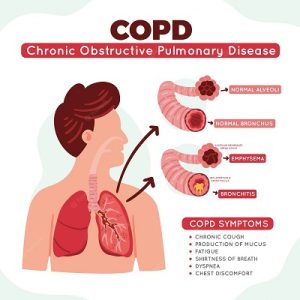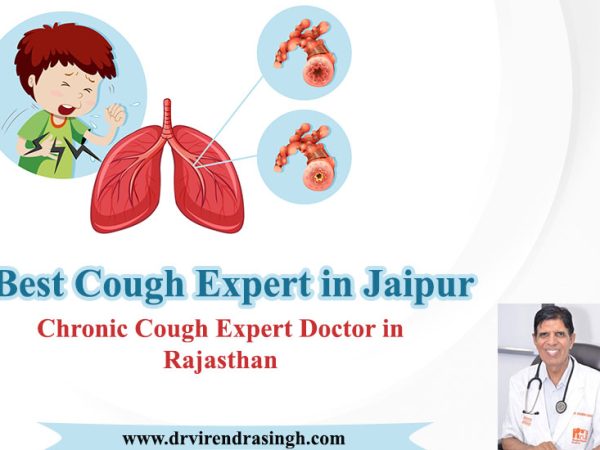
Types and Stages of COPD: Chronic obstructive pulmonary disease or COPD is the group of diseases that block the airflow and cause breathing-related problems. A person with COPD has less air going in and out of their lungs compared to someone with healthy lungs. This is either cause by airways and sacs becoming too compliant or the airway walls becoming thick and inflame. In some cases, the airways can become clogged due to increased mucus production, as seen in asthma patients. Shortness of breath, trouble breathing, and a persistent cough are common symptoms of COPD. Depending on how far the disease has progressed, COPD can be classified into stages or grades. Until you receive proper treatment, COPD is barely noticeable in its early stages, but it becomes more severe over time.
Types and Stages of COPD | Symptoms of COPD
According to studies, smoking is the major cause of COPD, and exposure to smoke, pollution, or industrial smoke also contributes to the cases. COPD symptoms can gradually become severe as time goes on and can lead to complications like heart problems, pulmonary hypertension, or even lung cancer therefore it is highly recommended to consult your physician on early signs of symptoms.
What are the Types of COPD:

There are two types of COPD based on the symptoms- Chronic bronchitis and Emphysema
Based on the severity of the symptoms, COPD is further classified into four different stages on the basis of which further treatment is determined.
To know more about the types, symptoms, as well as stages of Chronic obstructive pulmonary disease as explained by Dr Virendra Singh, read below:
There are two main types of COPD:
- Chronic bronchitis: It is the long-term inflammation of the lining bronchi i.e breathing passages in the lungs which can lead to swelling and increased formation of mucus. This condition results in breathing problems, frequent infections, and cough.
- Emphysema: In Emphysema, the walls of air sacs and the small airways, commonly known as alveoli are damage. The alveoli are either destroy, narrowed, stretched, or over-inflated causing the sacs to lose their shape and ability to recoil during the breathing cycle.
Stages of COPD
There are four different stages of COPD: mild, moderate, severe, and very severe; based on the symptoms shown by the patient.
Stage 01: Mild COPD
A person may experience shortness of breath, and an ongoing cough accompanied by mucus. The symptoms are easy to miss as they are mild due to which a person in this stage may not even realize that their lung functioning is abnormal. However, it shouldn’t be neglect because even if the symptoms may seem feeble, they still damage the lungs.
Stage 02: Moderate COPD
At this stage, the symptoms from stage 1 are slightly intensified and are easily noticeable. A person may experience shortness of breath during nominal physical activities along with an increase in cough and production of mucus. This also includes other symptoms like wheezing, fatigue, and having trouble sleeping. For most people, this is the stage where they become aware of the symptoms, getting it treat at this stage is highly recommend to avoid further complications.
Stage 03: Severe COPD
At stage 3, a person experiences restricted airflow in double measure combined with increased shortness of breath, frequent coughing or wheezing, and thick mucus. You may even experience extreme fatigue, weakness, and tightness in the chest due to weakened walls of the air sacs in the lungs. Furthermore, you might get flare-ups where the symptoms suddenly become more severe along with larger amounts of mucus clogging your bronchial tubes.
Stage 4: Very severe COPD:
In stage 4, the lung functioning is considerably low wherein people suffer from severe airflow limitations and are unable to perform daily activities smoothly due to shortness of breath. It can also lead to pulmonary hypertension, a form of blood pressure that can affect the arteries and the right side of your heart as it becomes an effort to simply breathe. Being hospitalized for breathing complications or lung infections can happen at this stage.
Conclusion
Now that you are aware of the different types and stages of COPD, if you are experiencing any signs like shortness of breath or cough, please get a consultation from a professional, even if the symptoms are meager. Detection and right treatment of COPD at an early stage are essential before its advancement to the next, more severe stages.



